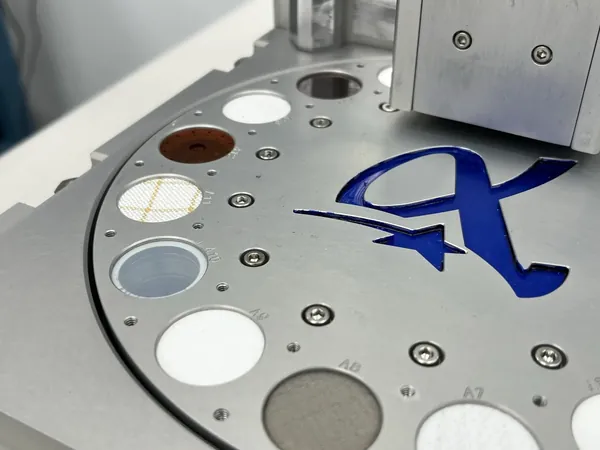
NASA's Ambitious Quest to Unravel the Mysteries of Lunar Dust!
2024-12-30
Author: Benjamin
Exploring the Enigma of Lunar Regolith
If you’ve ever gazed up at the Moon, a celestial body bathed in shades of grey, you’ve likely pondered the secrets it holds. Beyond its iconic craters and dark plains known as lunar maria, lies an enigmatic layer known as lunar regolith – a fine, dusty substance that has captivated scientists since the Apollo missions. In a groundbreaking initiative under the Commercial Lunar Payload Services (CLPS), NASA is set to delve deeper into this lunar powder than ever before.
The Moon: Our Closest Cosmic Neighbor
The Moon, our only natural satellite, boasts a diameter of 3,474 kilometers and orbits Earth at a distance of 384,400 kilometers. This makes it our closest cosmic neighbor, perpetually inspiring artists, scientists, and dreamers. Interestingly, due to a phenomenon known as synchronous rotation, we can only glimpse one half of the Moon from our planet. The other half remains shrouded in mystery, which is precisely why missions to the Moon are of paramount importance.
What is Lunar Regolith?
Composed primarily of materials resulting from billions of years of meteoric impacts, lunar regolith constitutes a loose layer covering the Moon’s bedrock. Made from tiny fragments of silicates, feldspar, pyroxenes, and even trace metals, this dusty layer presents both challenges and opportunities. While its abrasive nature poses risks to lunar equipment, it also holds potential as a resource for producing oxygen, water, and even construction materials for lunar habitats.
Introducing RAC-1: A Groundbreaking Instrument
NASA's latest instrument, RAC-1 (Regolith Adherence Characterization), is poised to investigate the nature of the lunar regolith. Set to be deployed by the Blue Ghost 1 Lunar Lander, this innovative payload represents a significant leap forward in our understanding of the Moon’s surface. CLPS is a NASA initiative designed to foster commercial partnerships for lunar exploration, supporting the ambitious goals of the Artemis program aimed at returning humans to the Moon and paving the way for future Mars missions.
The Mission of RAC-1
RAC-1's mission is to analyze how lunar regolith interacts with various materials, focusing on properties such as electrostatic attraction and adherence forces. The instrument, developed by Aegis Aerospace, will expose 15 different sample materials—including fabrics, paints, and solar cells—to the regolith. By measuring the accumulation of dust during landing and throughout the mission, scientists aim to identify which materials cope best with this abrasive environment.
The Importance of Understanding Lunar Regolith
But that’s not all! Understanding lunar regolith is crucial for the long-term sustainability of human presence on the Moon. As we gear up for Artemis missions, which aim to establish a lasting human presence on the lunar surface and eventually send astronauts to Mars, insights from RAC-1’s research could lead to innovative solutions for lunar habitats.
A New Chapter in Lunar Exploration
Will this pioneering research unlock the secrets of the Moon? As we prepare for the next chapter in lunar exploration, one thing is certain: the potential of the Moon is vast, and the journey to uncover its many mysteries is just beginning! Stay tuned as we follow this thrilling scientific adventure that could change our understanding of not just the Moon, but our place in the universe!



 Brasil (PT)
Brasil (PT)
 Canada (EN)
Canada (EN)
 Chile (ES)
Chile (ES)
 Česko (CS)
Česko (CS)
 대한민국 (KO)
대한민국 (KO)
 España (ES)
España (ES)
 France (FR)
France (FR)
 Hong Kong (EN)
Hong Kong (EN)
 Italia (IT)
Italia (IT)
 日本 (JA)
日本 (JA)
 Magyarország (HU)
Magyarország (HU)
 Norge (NO)
Norge (NO)
 Polska (PL)
Polska (PL)
 Schweiz (DE)
Schweiz (DE)
 Singapore (EN)
Singapore (EN)
 Sverige (SV)
Sverige (SV)
 Suomi (FI)
Suomi (FI)
 Türkiye (TR)
Türkiye (TR)
 الإمارات العربية المتحدة (AR)
الإمارات العربية المتحدة (AR)